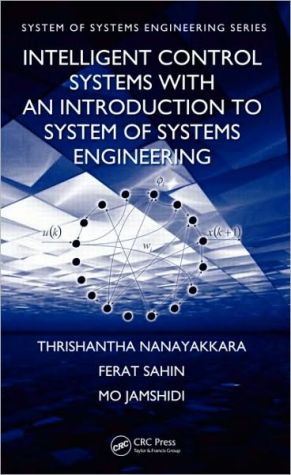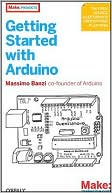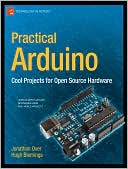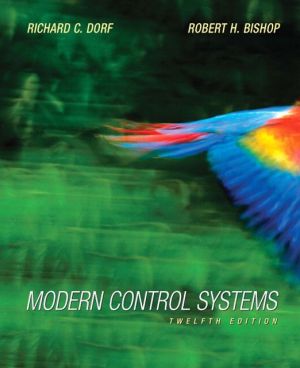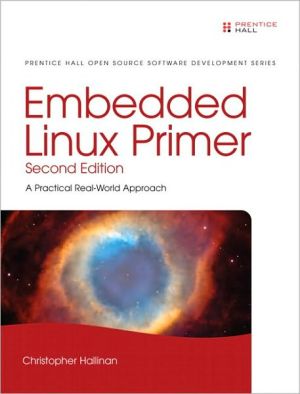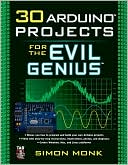Intelligent Control Systems with an Introduction to System of Systems Engineering
From aeronautics and manufacturing to healthcare and disaster management, systems engineering (SE) now focuses on designing applications that ensure performance optimization, robustness, and reliability while combining an emerging group of heterogeneous systems to realize a common goal.\ Use SoS to Revolutionize Management of Large Organizations, Factories, and Systems\ Intelligent Control Systems with an Introduction to System of Systems Engineering integrates the fundamentals of artificial...
Search in google:
From aeronautics and manufacturing to healthcare and disaster management, systems engineering (SE) now focuses on designing applications that ensure performance optimization, robustness, and reliability while combining an emerging group of heterogeneous systems to realize a common goal. Use SoS to Revolutionize Management of Large Organizations, Factories, and Systems Intelligent Control Systems with an Introduction to System of Systems Engineering integrates the fundamentals of artificial intelligence and systems control in a framework applicable to both simple dynamic systems and large-scale system of systems (SoS). For decades, NASA has used SoS methods, and major manufacturers—including Boeing, Lockheed-Martin, Northrop-Grumman, Raytheon, BAE Systems—now make large-scale systems integration and SoS a key part of their business strategies, dedicating entire business units to this remarkably efficient approach.Simulate Novel Robotic Systems and ApplicationsTranscending theory, this book offers a complete and practical review of SoS and some of its fascinating applications, including:Manipulation of robots through neural-based network controlUse of robotic swarms, based on ant colonies, to detect minesOther novel systems in which intelligent robots, trained animals, and humans cooperate to achieve humanitarian objectivesTraining engineers to integrate traditional systems control theory with soft computing techniques further nourishes emerging SoS technology. With this in mind, the authors address the fundamental precepts at the core of SoS, which uses human heuristics to model complex systems, providing a scientific rationale for integrating independent, complex systems into a single coordinated, stabilized, and optimized one. They provide readers with MATLAB® code, which can be downloaded from the publisher's website to simulate presented results and projects that offer practical, hands-on experience using concepts discussed throughout the book.
Preface xiiiAbout the Authors xv1 Introduction 1References 72 Elements of a Classical Control System 92.1 Introduction 92.1.1 Plant 92.1.2 Variables 102.1.3 System 102.1.4 Disturbances 112.2 How the Model of a Dynamic System Can Help to Control It 112.2.1 Newtonian Dynamics 112.2.2 Control Experiments on a Point Mass 122.2.3 Projects 152.3 Control of Robot Manipulators 162.3.1 Derivation of Dynamics of a Robot Manipulator 162.3.2 Worked Out-Project 1: Manipulator Dynamics 212.3.3 Worked Out Project 2: Manipulator Dynamics 232.3.4 Effect of Parameter Uncertainty on Model-Based Control Performance 242.3.5 Worked Out Project 3: Hybrid Controllers 272.4 Stability 312.4.1 Equilibrium Points and Their Stability 312.4.2 Lyapunov Stability 342.4.3 Worked Out Example 35References 363 Introduction to System of Systems 373.1 Introduction 373.2 Definitions of SoS 383.3 Challenging Problems in SoS 393.3.1 Theoretical Problems 393.3.1.1 Open Systems Approach to SoSE 393.3.1.2 Engineering of SoS 403.3.1.3 Standards of SoS 403.3.1.4 SoS Architecting 413.3.1.5 SoS Simulation 413.3.1.6 SoS Integration 423.3.1.7 Emergence in SoS 433.3.1.8 SoS Management: Governance of Paradox 443.3.2 Implementation Problems for SoS 453.3.2.1 SE for the Department of Defense SoS 453.3.2.2 E-enabling and SoS Aircraft Design via SoSE 463.3.2.3 An SoS Perspective on Infrastructures 473.3.2.4 Sensor Networks 483.3.2.5 An SoS View of Services 483.3.2.6 SoSE in Space Exploration 503.3.2.7 Communication and Navigation in Space SoS 503.3.2.8 Electric Power Systems Grids as SoS523.3.2.9 SoS Approach for Renewable Energy 523.3.2.10 Sustainable Environmental Management from an SoSE Perspective 533.3.2.11 Robotic Swarms as an SoS 543.3.2.12 Transportation Systems 553.3.2.13 Health Care Systems 573.3.2.14 Global Earth Observation SoS 583.3.2.15 Deepwater Coastguard Program 593.3.2.16 Future Combat Missions 603.3.2.17 National Security 613.4 Conclusions 62References 624 Observer Design and Kalman Filtering 674.1 State Space Methods for Model-Based Control 674.1.1 Derivation of Dynamics for the Cart-Pole Balancing Problem 674.1.2 Introduction to State Space Representation of Dynamics 704.1.3 Regulator Control of State Vectors 724.2 Observing and Filtering Based on Dynamic Models 734.2.1 Why Observers? 744.2.2 Elements of an Observer 744.2.3 Simulations on an Inverted Pendulum Control 774.3 Derivation of the Discrete Kalman Filter 834.4 Worked Out Project on the Inverted Pendulum 874.5 Particle Filters 94References 975 Fuzzy Systems-Sets, Logic, and Control 995.1 Introduction 995.2 Classical Sets 1015.3 Classical Set Operations.1025.3.1 Union 1025.3.2 Intersection 1025.3.3 Complement 1035.4 Properties of Classical Set 1035.5 Fuzzy Sets 1045.6 Fuzzy Set Operations 1065.6.1 Union 1065.6.2 Intersection 1085.6.3 Complement 1085.7 Properties of Fuzzy Sets 1085.7.1 Alpha-Cut Fuzzy Sets 1095.7.1.1 Alpha-Cut Sets 1105.7.2 Extension Principle 1105.8 Classical Relations versus Fuzzy Relations 1125.9 Predicate Logic 1145.9.1 Tautologies 1185.9.2 Contradictions 1185.9.3 Deductive Inferences 1195.10 Fuzzy Logic 1215.11 Approximate Reasoning 1235.12 Fuzzy Control 1245.12.1 Inference Engine 1265.12.2 Denazification 1295.12.3 Fuzzy Control Design 1295.12.4 Analysis of Fuzzy Control Systems 1325.12.5 Stability of Fuzzy Control Systems 1355.12.5.1 Time-Domain Methods 1365.12.5.2 Frequency-Domain Methods 1385.12.6 Lyapunov Stability 1385.12.7 Stability via Interval Matrix Method 1435.13 Conclusions 147References 1476 Neural Network-Based Control 1516.1 Introduction to Function Approximation 1516.1.1 Biological Inspirations 1516.1.2 Construction of Complex Functions by Adaptive Combination of Primitives 1606.1.3 Concept of Radial Basis Functions 1616.2 NN-Based Identification of Dynamics of a Robot Manipulator 1656.2.1 An Approach to Estimate the Elements of the Mass, Centrifugal, Coriolis, and Gravity Matrices 1686.2.2 Optimum Parameter Estimation 1696.3 Structure of NNs 1746.4 Generating Training Data for an NN 1786.5 Dynamic Neurons 1796.6 Attractors, Strange Attractors, and Chaotic Neurons 1816.6.1 Attractors and Recurrent Neurons 1816.6.2 A Chaotic Neuron 1836.7 Cerebellar Networks and Exposition of Neural Organization to Adaptively Enact Behavior 184References 1887 System of Systems Simulation 1897.1 Introduction 1897.2 SoS in a Nutshell 1907.3 An SoS Simulation Framework 1957.3.1 DEVS Modeling and Simulation 1957.3.2 XML and DEVS 1967.4 SoS Simulation Framework Examples 1977.4.1 Case 1: Data Aggregation Simulation 1987.4.1.1 DEVS-XML Format 1987.4.1.2 Programming Environment 1997.4.1.3 Simulation Results 2007.4.2 Case Study 2: A Robust Threat Detection System Simulation 2027.4.2.1 DEVS-XML Format 2027.4.2.2 Simulation Setup 2037.4.2.3 Robust Threat Detection Simulation 2057.4.3 Case 3: Threat Detection Scenario with Several Swarm Robots 2087.4.3.1 XML Messages 2097.4.3.2 DEVS Components of the Scenario 2107.4.3.3 DEVS-XML SoS Simulation 2157.5 Agent-in-the-Loop Simulation of an SoS 2227.5.1 XML SoS Real-Time Simulation Framework 2237.5.1.1 Threat Detection Scenario 2237.5.1.2 Synchronization 2237.5.2 DEVS Modeling 2247.5.2.1 DEVS Components 2247.5.2.2 Mobile Swarm Agent 2247.5.2.3 Base Station 2267.5.3 Agent-in-the-Loop Simulation 2277.6 Conclusion 228Acknowledgment 228References 2298 Control of System of Systems 2338.1 Introduction 2338.2 Hierarchical Control of SoS 2338.3 Decentralized Control of SoS 2408.3.1 Decentralized Navigation Control 2438.3.2 The Decentralized Control Law 2448.3.2.1 Motion Coordination 2458.4 Other Control Approaches 2528.4.1 Consensus-Based Control 2528.4.2 Cooperative Control 2558.4.3 Networked Control 2558.5 Conclusions 258References 2599 Reward-Based Behavior Adaptation 2619.1 Introduction 2619.1.1 Embodiment 2639.1.2 Situatedness 2639.1.3 Internal Models 2649.1.4 Policy 2649.1.5 Reward 2649.1.6 Emergence 2649.2 Markov Decision Process 2659.2.1 A Markov State 2659.2.2 Value Function 2669.3 Temporal Difference-Based Learning 2679.4 Extension to Q Learning 2709.5 Exploration versus Exploitation 2719.6 Vector Q Learning 2729.6.1 Summary of Results 276References 27910 An Automated System to Induce and Innovate Advanced Skills in a Group of Networked Machine Operators 28110.1 Introduction 28110.2 Visual Inspection and Acquisition of Novel Motor Skills 28210.3 Experimental Setup 28310.4 Dynamics of Successive Improvement of Individual Skills 28510.5 Proposed Model of Internal Model Construction and Learning 28910.6 Discussion and Conclusion 294References 29411 A System of Intelligent Robots-Trained Animals-Humans in a Humanitarian Demining Application 29711.1 Introduction 29711.1.1 Mine Detection Technology 29811.1.2 Metal Detectors (Electromagnetic Induction Devices) 29911.1.3 Ground-Penetrating Radar 29911.1.4 Multisensor Systems Using GPR and Metal Detectors 30011.1.5 Trace Explosive Detection Systems 30111.1.6 Biosensors 30111.1.7 Magnetic Quadrupole Resonance 30111.1.8 Seismoacoustic Methods 30111.2 A Novel Legged Field Robot for Landmine Detection 30211.2.1 Key Concerns Addressed by the Moratuwa University Robot for Anti-Landmine Intelligence Design 30211.2.2 Key Design Features of MURALI Robot 30311.2.3 Designing the Robot with Solidworks 30511.2.4 Motherboard to Control the Robot 33311.2.5 Basics of Sensing and Perception 33611.2.6 Perception of Environment and Intelligent Path Planning 33911.3 Combining a Trained Animal with the Robot 34611.3.1 Basic Background on Animal-Robot interaction 34711.3.2 Background on Reward-Based Learning 34811.3.3 Experience with Training a Mongoose 34811.3.3.1 Phase 1: Conditioning Smell, Reward, and Sound 34811.3.3.2 Phase 2: Learning in a Paradigm Where the Degree of Difficulty of Correct Classification Was Progressively Increased 34911.4 Simulations on Multirobot Approaches to Landmine Detection 353References 35912 Robotic Swarms for Mine Detection System of Systems Approach 36312.1 Introduction 36312.1.1 Swarm Intelligence 36312.1.2 Robotic Swarms 36412.1.3 System-of Systems 36512.2 SoS Approach to Robotic Swarms36612.2.1 Interoperability 36612.2.2 Integration 36712.3 Designing System of Swarm Robots: GroundScouts 36812.3.1 Hardware Modularity 36912.3.1.1 Locomotion 37012.3.1.2 Control 37112.3.1.3 Sensor 37212.3.1.4 Communication 37312.3.1.5 Actuation 37312.3.2 Software Modularity 37412.3.2.1 Operating System 37512.3.2.2 Dynamic Task Uploading 37512.3.3 Communication Protocol: Adaptive and Robust 37612.3.3.1 Physical Layer 37712.3.3.2 MAC Layer 37712.3.3.3 Implementation Results 38112.4 Mine Detection with Ant Colony-Based Swarm Intelligence 38212.4.1 Simulation of Mine Detection with ACO 38312.4.1.1 Arit Colony Optimization 38312.4.1.2 The Mine Detection Problem 38512.4.1.3 ACO Model Used for Mine Detection 38712.4.2 Implementation of ACO-Based Mine Detection Algorithm on GroundScouts 39712.4.2.1 Implementation of Mines 39812.4.2.2 Implementation of the Scent 39912.4.2.3 Main Program 40012.4.2.4 Graphical User Interface 40312.4.3 Experimental Results 40612.5 Conclusion 409Acknowledgment 410References 410Index 417
